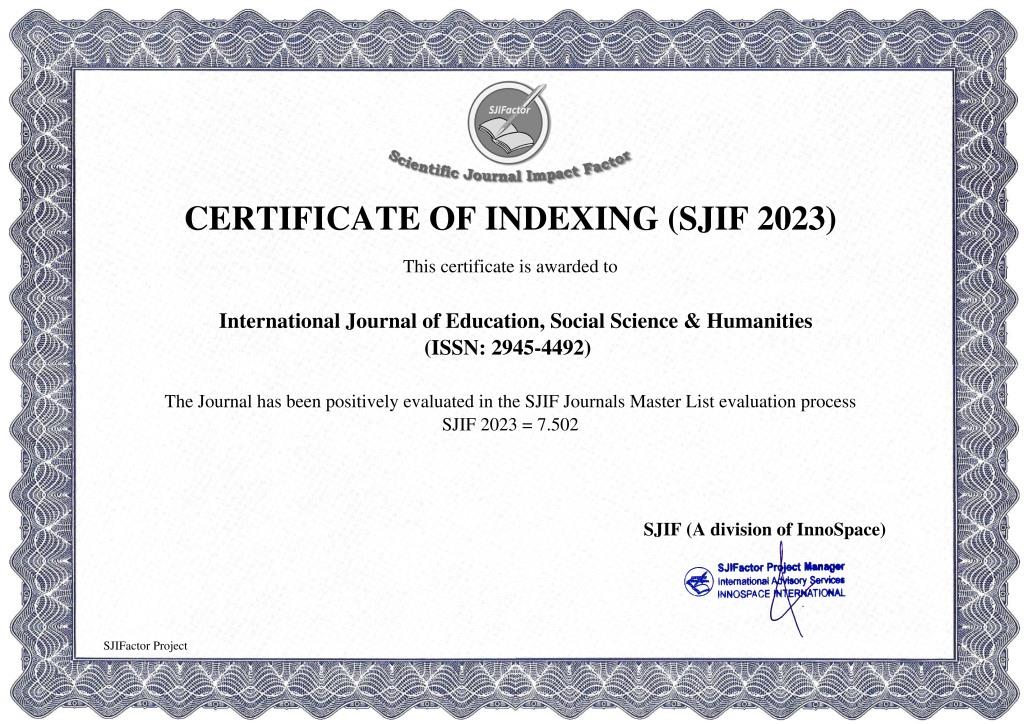THE NEED TO INCREASE EFL LEARNERS’ CULTURAL AWARENESS AT CHIRCHIK STATE PEDAGOGICAL UNIVERSITY
Keywords:
EFL learners, cultural difference, cultural awareness, cultural sensitivityAbstract
The main topic of this article is how language and culture interact. Culture and language are intertwined. Because any language is an essential component of its culture, it is impossible to learn the target language properly if one is not aware of the cultural contexts. Additionally, there can be misunderstandings between speakers whose first language is not English and speakers whose first language is English. According to the author, students at Chirchik State Pedagogical university and other Uzbekistan EFL programs still lack an essential cultural component in their foreign language curricula. Therefore, learning English at Chirchik Pedagogical university should focus on both language acquisition and cultural understanding. English teachers in schools are required not only to teach language but also to impart cultural background knowledge and further to effectively deal with the relationship between language and culture in order to improve students' sensitivity to cultural differences between the West and the East and to raise their cultural awareness. This article begins by discussing the need of incorporating cultural awareness into English instruction in schools. It then goes on to highlight some typical cultural grammatical errors made by English language learners at Chirchik State Pedagogical university .
References
Brown, H.D. (1994). US: Prentice Hall Regents, "Principles of Language Learning and Teaching."
K. Chastain. (1998). Gaining proficiency in a second language. United States: HBJ Publishers. the Murshed Haider Choudhury. (2013).
Implications, difficulties, and strategies for teaching culture in EFL. Saudi Arabia's King Khalid University.
Liu, R. Q., and Deng, Y. C. (1989). Culture and language. Foreign Language Teaching and Research Press, Beijing.
T. Goode. (2006) revision of 2001. Crucial definition. National Centre for Cultural Competence, Centre for Child and Human Development, George Town University, Washington, D.C.
Trang Thi Tuy Nguyen, 2017. Learner outcomes for integrating culture into language teaching and learning. Vietnam's Kon Tun College. Edward Sapir, 2000. An introduction to the study of language. a. New York. Bartleby.com.
June 2019, Volume 5, Number 1 129 Silberstein, S. (2001). Social Linguistics, in R. Carter and D. The Cambridge Guide to Teaching English to Speakers of Other Languages is published by Nunan. Press of Cambridge University, Cambridge.
Romana Tang. (1999). A Reflection on "Culture" and Its Place in Foreign Language Classrooms. TESL Journal on the Internet, Vol. No. 8 of Volume V, August 1999. http://iteslj.org/Articles/Tang-Culture.html.
M. Winkelman. (2005). Cutural Sensitivity, Competence, and Awareness. Eddie Bowers Publishing Co, Inc. ZHU, Z. Peosta, Lowa. L. (2007). Confucian epochs. The Changan Press, Beijing














